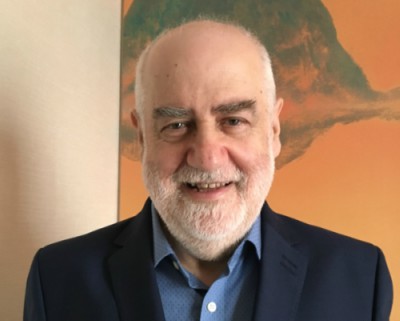UCSB Department of Mathematics
Distinguished Lecture Series
by
Gunther Uhlmann
(University of Washington and HKUST)

Lecture 1:
Wednesday, February 14, 2018
3:00-4:00pm, Flying A Studios Room, UCen
Lecture 2:
Thursday, February 15, 2018
3:00-4:00pm, Flying A Studios Room, UCen
Lecture 3:
Friday, February 16, 2018
3:00-4:00pm, Broida Hall 1640
UCSB campus map Event Poster Current & Past Distinguished Lectures
Biography:
Gunther Uhlmann is the Walker Family Endowed Professor of Mathematics at the University of Washington and the Si-Yuan Professor at the IAS of HKUST. Professor Uhlmann received his PhD from Massachusetts Institute of Technology in 1976. He is widely known for his fundamental contributions to the study of inverse problems, notably to the development of microlocal and geometric methods. Gunther Uhlmann’s research achievements were recognized by many awards and honors, such as the 2011 Bôcher Memorial Prize of the AMS, the 2011 Kleinman Prize of the SIAM and the 2017 Solomon Lefschetz Medal of the Mathematical Council of the Americas, as well as invitations to speak at the 1998 ICM, to deliver the 2012 AMS Einstein Lecture and to give a plenary talk at the 2015 International Congress of Mathematical Physics. He is a member of the American Academy of Arts and Sciences, a foreign member of the Finnish Academy of Science and Letters and a fellow of the AMS and the SIAM.
Lecture 1: Harry Potter’s Cloak via Transformation Optics
Can we make objects invisible? This has been a subject of human fascination for millennia in Greek mythology, movies, science fiction, etc. including the legend of Perseus versus Medusa and the more recent Star Trek and Harry Potter. In the last decade or so there have been several scientific proposals to achieve invisibility. We will introduce some of these in a non-technical fashion concentrating on the so-called “transformation optics” that has received the most attention in the scientific literature.
Lecture 2: Journey to the Center of the Earth
We will consider the inverse problem of determining the sound speed or index of refraction of a medium by measuring the travel times of waves going through the medium. This problem arises in global seismology in an attempt to determine the inner structure of the Earth by measuring travel times of earthquakes. It has also several applications in optics and medical imaging among others.
The problem can be recast as a geometric problem: Can one determine the Riemannian metric of a Riemannian manifold with boundary by measuring the distance function between boundary points? This is the boundary rigidity problem. We will also consider the problem of determining the metric from the scattering relation, the so-called lens rigidity problem. The linearization of these problems involve the integration of a tensor along geodesics, similar to the X-ray transform.
We will also describe some recent results, join with Plamen Stefanov and Andras Vasy, on the partial data case, where you are making measurements on a subset of the boundary. No previous knowledge of Riemannian geometry will be assumed.
Lecture 3: Seeing Through Space Time
We consider inverse problems for the Einstein equation with a time-depending metric on a 4-dimensional globally hyperbolic Lorentzian manifold. We formulate the concept of active measurements for relativistic models. We do this by coupling Einstein equations with equations for scalar fields.
The inverse problem we study is the question of whether the observations of the solutions of the coupled system in an open subset of the space-time with the sources supported in this set determines the properties of the metric in a larger domain. To study this problem we define the concept of light observation sets and show that knowledge of these sets determine the conformal class of the metric. This corresponds to passive observations from a distant area of space which is filled by light sources.
We will start by considering inverse problems for scalar non-linear hyperbolic equations to explain our method. No previous knowledge of Lorentzian geometry or general relativity will be assumed. This is joint work with P. Hinz, Y. Kurylev, M. Lasss and Y. Wang.
Acknowledgment: The event is supported by the RTG grant in Topology and Geometry funded by the National Science Foundation (NSF) and the Department of Mathematics.
